Are you struggling to keep your prayer plant thriving? Do you watch its beautiful leaves droop and wonder what went wrong? You’re not alone. Prayer plants (Maranta leuconeura) are stunning but often misunderstood houseplants, known for their captivating nightly leaf movements. Many plant enthusiasts find themselves facing a perplexing array of issues, from crispy brown tips to a complete lack of that iconic “praying” motion. This guide isn’t just another overview; it’s your definitive, interactive resource designed to transform your Maranta from merely surviving to absolutely flourishing.
We’ve meticulously crafted the most comprehensive and interactive guide to prayer plant care available, uniquely combining an expert-level troubleshooting tool, specific care advice for popular varieties, and engaging how-to video tutorials and infographics to ensure every reader can achieve a thriving Maranta. By the end of this article, you’ll possess the knowledge and practical strategies to master the art of how to care for your prayer plant, prevent common issues, and confidently diagnose and fix any problems that arise. Get ready to cultivate a lush, vibrant Maranta that truly brings life to your space.
TABLE OF CONTENTS
Prayer Plant Care Quick Facts: Your Essential Overview
Dive into the world of the Maranta leuconeura with these essential quick facts. This beautiful houseplant, often simply called a “prayer plant” due to its fascinating leaf movements, is a favorite for its striking foliage. Its leaves typically display vibrant patterns, often with shades of green, red, and cream, making it a captivating addition to any indoor garden.

- Botanical Name: Maranta leuconeura
- Common Name: Prayer Plant
- Key Characteristics: Oval-shaped leaves with distinct colorful veins or patterns; known for “nyctinasty” – leaves fold upwards at night like praying hands and flatten during the day.
- Ideal Light: Bright, indirect light
- Watering Frequency: Keep soil consistently moist but not soggy; water when the top inch of soil feels dry.
- Humidity: High (60%+)
- Temperature: 65-80°F (18-27°C)
- Soil Type: Well-draining, aerated, slightly acidic potting mix
Understanding Your Maranta: What Makes This Plant Unique?
Before we delve into the specifics of prayer plant care, it’s vital to understand what makes your Maranta so special. Hailing from the tropical rainforests of Brazil, Maranta leuconeura thrives in conditions that mimic its natural, humid, and shaded environment. This understanding is key to unlocking its full potential in your home.
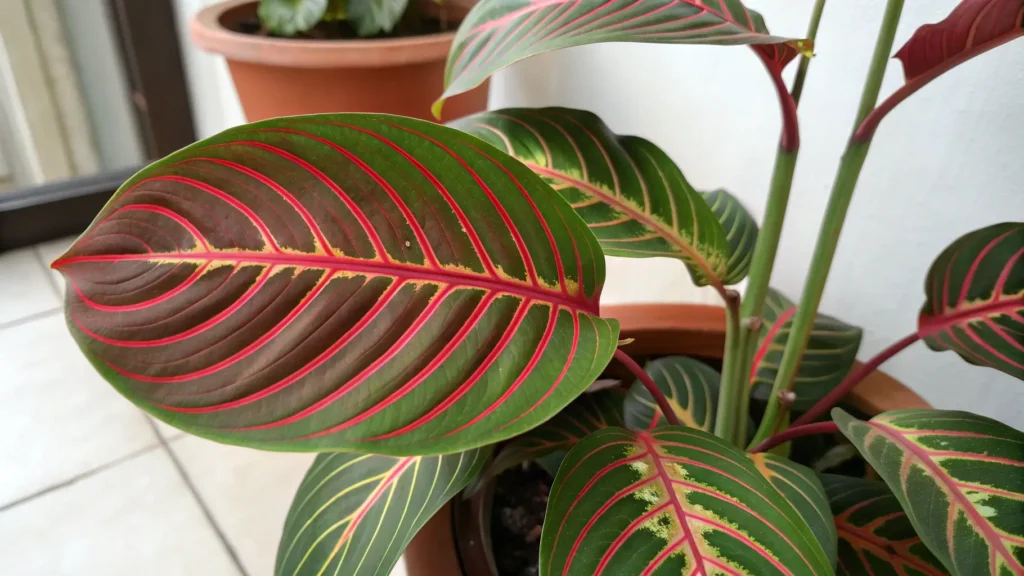
One of its most captivating features is “nyctinasty,” the rhythmic upward folding of its leaves at night, resembling hands clasped in prayer, and their flattening again by day. This evolutionary adaptation helps the plant conserve moisture and protect itself from nighttime predators in its native habitat.
- Botanical Name and Origin: Maranta leuconeura, native to the humid rainforests of Central and South America.
- Common Varieties:
- ‘Red Vein’ (Erythroneura): Characterized by striking red veins on dark green leaves.
- ‘Lemon Lime’: Features bright, neon green veins against darker green foliage.
- ‘Kim’: Displays lighter green veins and splotches on a darker green background.
- ‘Fascinator’ (Tricolor): A popular variety with deep green leaves, red veins, and lighter green or yellow splotches.
- The Purpose of Nyctinasty: This daily leaf movement is believed to be a survival mechanism, possibly to minimize water loss, deter herbivores, or optimize light absorption.
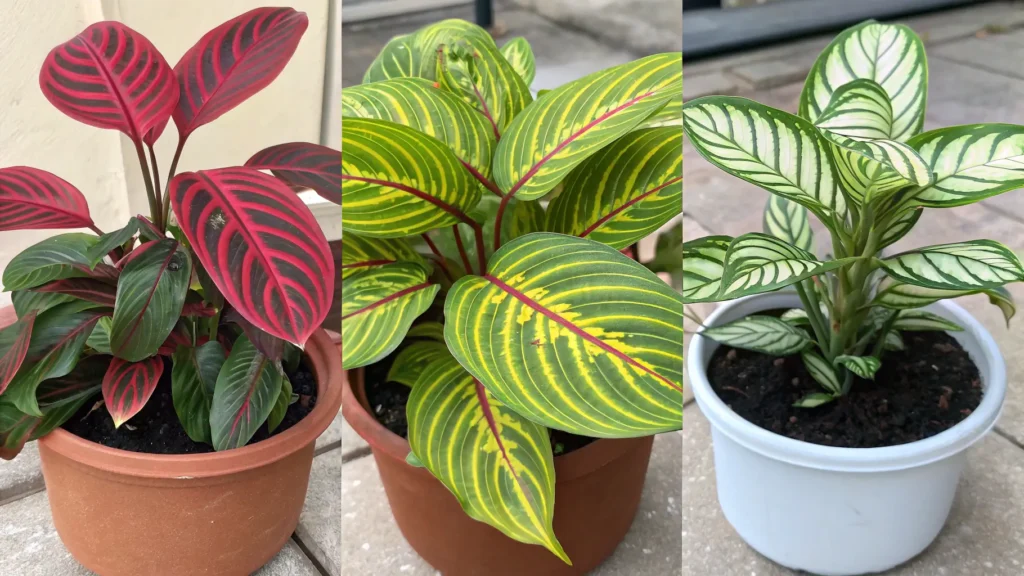
“Marantas are living art, constantly reminding us of nature’s delicate balance and resilience,” shares renowned botanist Dr. Elara Vance. “Their daily dance is a beautiful adaptation that offers a fascinating glimpse into the plant kingdom’s ingenuity.”
Essential Prayer Plant Care Requirements for Thriving Growth
To truly master how to care for your prayer plant, a deep understanding of its fundamental needs is crucial. This comprehensive section covers every aspect, from light to repotting, ensuring your Maranta has the perfect foundation for lush, vibrant growth.
Light Requirements: Illuminating Your Maranta’s Potential
Prayer plants prefer bright, indirect light, mimicking their rainforest understory habitat. Too much direct sun can scorch their delicate leaves, while too little can lead to dullness and leggy growth.
- Ideal Conditions: Place near an east or north-facing window, or a few feet back from a south or west-facing window, where it receives ample light without direct sunbeams hitting the leaves.
- Signs of Too Much Light: Fading leaf color, scorched or crispy patches on leaves.
- Signs of Too Little Light: Leggy growth, reduced “praying” movement, dull leaf coloration.
- Optimal Placement: A bright bathroom or kitchen often provides ideal conditions due to higher humidity.
Watering Your Prayer Plant: The Art of Consistent Moisture
Consistent moisture is paramount for prayer plants, but avoiding waterlogged soil is equally important to prevent root rot.
- When to Water: Water when the top inch of soil feels dry to the touch. Stick your finger into the soil to check.
- How to Water: Water thoroughly until you see water draining from the bottom of the pot. Discard any excess water from the saucer.
- Avoiding Overwatering: Soggy soil leads to root rot. If leaves are yellowing and drooping, it might be overwatering.
- Avoiding Underwatering: Dry, crispy leaves, especially at the tips and edges, are a sign of underwatering.
- Using Filtered or Distilled Water: Prayer plants are sensitive to fluoride and chlorine often found in tap water. Using filtered, distilled, or rainwater can prevent brown leaf tips.
Humidity Needs: Creating a Tropical Microclimate
High humidity is not just a preference; it’s a requirement for Marantas to thrive, given their tropical origins. Aim for at least 60% humidity.
- Importance of High Humidity: Prevents brown leaf tips and promotes lush foliage.
- Effective Methods:
- Misting: Provides temporary relief, but needs to be frequent (daily).
- Pebble Trays: Place the potted plant on a tray filled with pebbles and water, ensuring the pot does not sit directly in the water.
- Humidifiers: The most effective method for consistent humidity.
- Grouping Plants: Plants release moisture, creating a microclimate when grouped.
| Misting vs. Pebble Trays: A Detailed Comparison | Misting | Pebble Tray |
|---|---|---|
| Effectiveness | Temporary, needs frequent reapplication | Consistent, longer-lasting localized humidity |
| Risk of Fungal Issues | Higher, if water sits on leaves too long | Low, if pot isn’t in water |
| Maintenance | Daily/twice daily | Weekly water refill, occasional tray cleaning |
| Best For | Quick boost, supplement to other methods | Foundation of consistent humidity |
Best Soil & Potting Mix: Building a Foundation for Health
The right soil mix is foundational for a healthy Maranta. It needs to retain some moisture while draining freely to prevent root rot.
- Characteristics of Ideal Soil: Well-draining, aerated, slightly acidic, and moisture-retentive.
- Components:
- Peat Moss or Coco Coir: For moisture retention and slight acidity.
- Perlite or Pumice: For aeration and drainage.
- Pine Bark Fines or Orchid Bark: Improves drainage and provides aeration.
DIY Prayer Plant Soil Mix Recipe:
- 2 parts Peat Moss or Coco Coir
- 1 part Perlite or Pumice
- 1 part Coarse Sand or Small Orchid Bark
- Optional: a handful of worm castings for nutrients.
Ideal Temperature & Placement: Keeping Your Maranta Comfortable
Prayer plants thrive in warm, stable temperatures, reflecting their tropical origins.
- Optimal Temperature Range: 65-80°F (18-27°C).
- Avoiding Drafts: Keep away from cold windows in winter, air conditioning vents, or external doors that can cause sudden temperature drops.
- Placement: Stable indoor environments, away from extreme heat sources or cold drafts.
Fertilizing Your Maranta: Nourishment for Lush Foliage
Feed your prayer plant during its active growing season to support lush leaf production.
- When to Fertilize: Spring and summer, typically once every 2-4 weeks. Reduce or stop entirely in fall and winter.
- What Type of Fertilizer: A balanced liquid houseplant fertilizer (e.g., 5-5-5 or 10-10-10), diluted to half strength. Organic options like worm castings or fish emulsion are also excellent.
- How Much and How Often: Always dilute liquid fertilizers to half the recommended strength to avoid chemical burn.
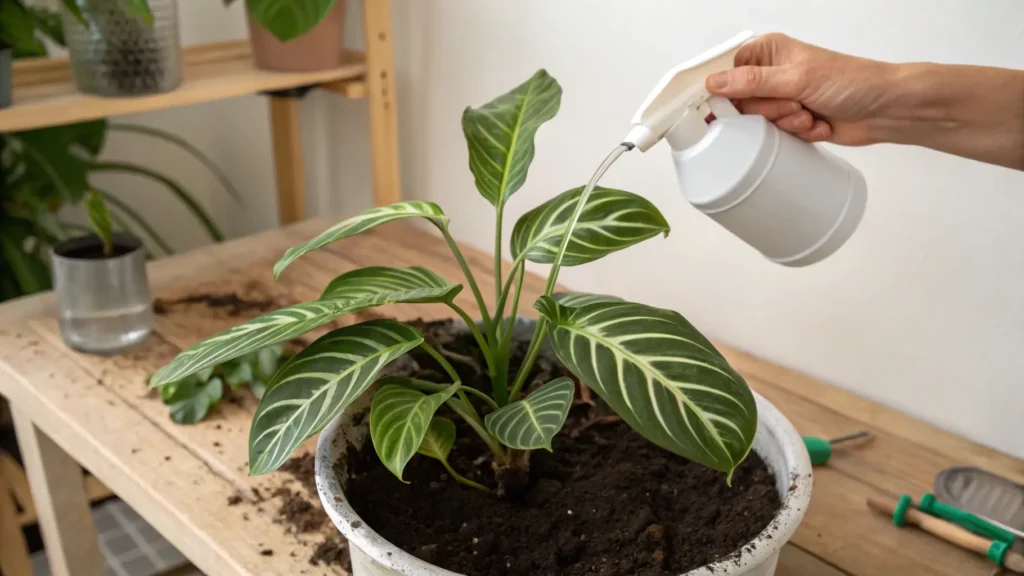
Pruning for Health & Bushiness: Shaping Your Plant
Pruning helps maintain your prayer plant’s shape, encourages bushier growth, and removes any unsightly or unhealthy foliage.
- Why Prune:
- Encourage Bushier Growth: Pinching back leggy stems stimulates new growth from lower nodes.
- Remove Leggy Stems: Prevents the plant from becoming too sparse.
- Remove Dead or Damaged Leaves: Improves plant health and aesthetics.
- How to Prune: Use clean, sharp scissors or pruners. Cut just above a leaf node (where a leaf meets the stem). You can remove up to one-third of the plant at a time.
Repotting Your Prayer Plant: When and How to Refresh
Repotting is essential for refreshing the soil and providing room for root growth.
- Signs It’s Time to Repot: Roots are growing out of the drainage holes, water runs straight through, or growth has stalled. Typically every 1-2 years.
- Choosing the Right Pot: Select a pot only one size larger than the current one (e.g., 6-inch to 8-inch). Ensure it has drainage holes. Terracotta pots can help prevent overwatering.
- Step-by-Step Repotting Process:
- Gently remove the plant from its current pot.
- Loosen any circling roots at the bottom.
- Add a layer of fresh potting mix to the new pot.
- Place the plant in the center, ensuring the soil line is similar to its previous depth.
- Fill around the roots with new soil, gently tamping it down.
- Water thoroughly and place in a spot with indirect light.
Propagating Your Prayer Plant: Expanding Your Collection
Propagating your prayer plant is a rewarding way to create new plants from your existing one, whether to share with friends or grow your own collection. The easiest methods involve stem cuttings.
- Why Propagate:
- Share: Gift new plants to fellow enthusiasts.
- Save: Create backups of your favorite plant.
- Expand: Grow more prayer plants for your home.
- Methods: Stem cuttings in water or directly in soil.
Step-by-Step Instructions for Water Propagation:
- Select a Healthy Stem: Choose a stem with 2-3 leaves and at least one node (where a leaf attaches) below the leaves.
- Make the Cut: Using clean, sharp scissors, cut the stem about 1/4 inch below a node. Remove any leaves that would be submerged in water.
- Place in Water: Put the cutting in a clear glass or jar filled with filtered water, ensuring at least one node is submerged.
- Monitor & Refresh: Change the water every few days to keep it fresh. Roots should appear within 2-4 weeks.
- Potting Up: Once roots are 1-2 inches long, transfer the cutting to a small pot with moist potting mix.
Step-by-Step Instructions for Soil Propagation:
- Prepare Cuttings: Follow steps 1 and 2 from water propagation.
- Rooting Hormone (Optional): Dip the cut end in rooting hormone powder for faster rooting.
- Plant in Soil: Plant the cutting directly into a small pot filled with moist, well-draining potting mix.
- Create Humidity: Cover the pot with a plastic bag or dome to create a mini-greenhouse effect, increasing humidity for rooting.
- Keep Moist: Keep the soil consistently moist but not soggy. Roots typically form in 4-6 weeks.
- Aftercare for Newly Propagated Plants: Keep young plants in warm, humid conditions with bright, indirect light. Treat them like mature prayer plants once established.
Troubleshooting Common Prayer Plant Problems: Diagnose & Fix Every Issue
Prayer plants are beautiful, but they can be dramatic! Identifying the problem quickly is the first step to a happy plant. This section will help you diagnose and fix common issues, ensuring your Maranta stays vibrant.
Yellowing Leaves:
- Causes: Most often overwatering (leading to root rot), but can also be nutrient deficiency, pest infestation, or too little light.
- Solutions: Check soil moisture – if soggy, reduce watering. Inspect roots for rot; if present, repot. Fertilize if soil is depleted. Increase light if too dim.
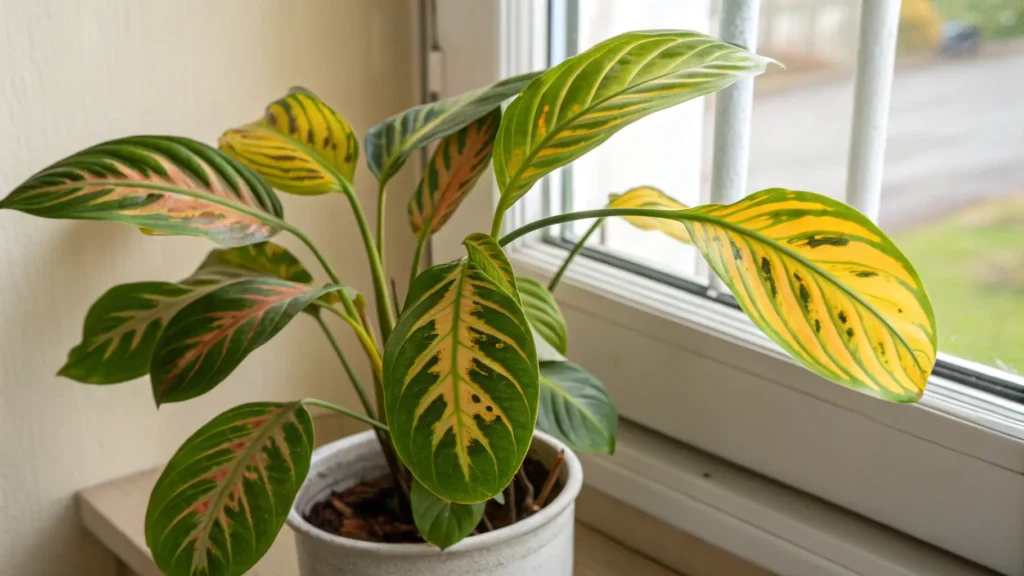
Brown Tips/Edges:
- Causes: Low humidity, fluoride/chlorine in tap water, underwatering, or occasionally over-fertilizing.
- Solutions: Increase humidity (humidifier, pebble tray). Use filtered, distilled, or rainwater. Ensure consistent watering. Flush soil if over-fertilized.
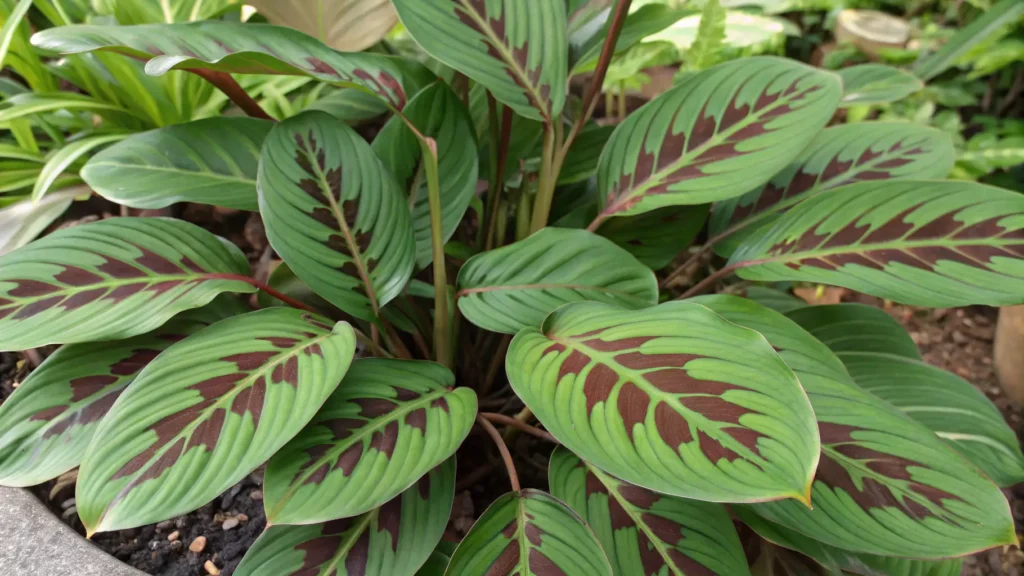
Drooping/Limp Leaves:
- Causes: Both underwatering (plant is thirsty) and overwatering (root rot prevents water uptake) can cause drooping. Also, temperature shock.
- Solutions: Check soil moisture deeply. If dry, water. If soggy, let dry out and reduce future watering; check for root rot. Ensure stable temperatures.
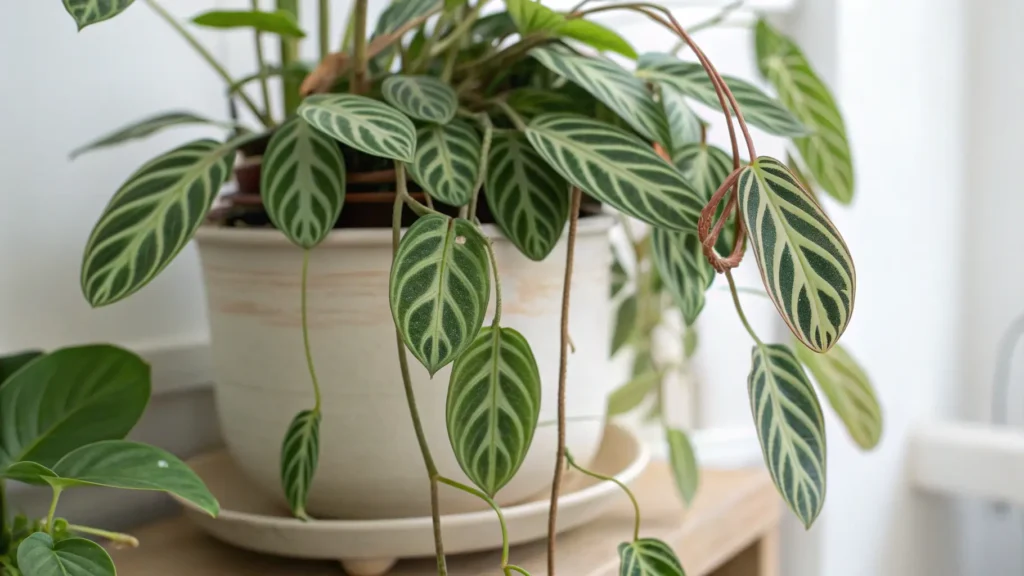
Curling Leaves:
- Causes: Typically low humidity, pest infestation (especially spider mites), or too much intense light.
- Solutions: Boost humidity. Inspect undersides of leaves for pests. Move to a shadier spot if light is too intense.
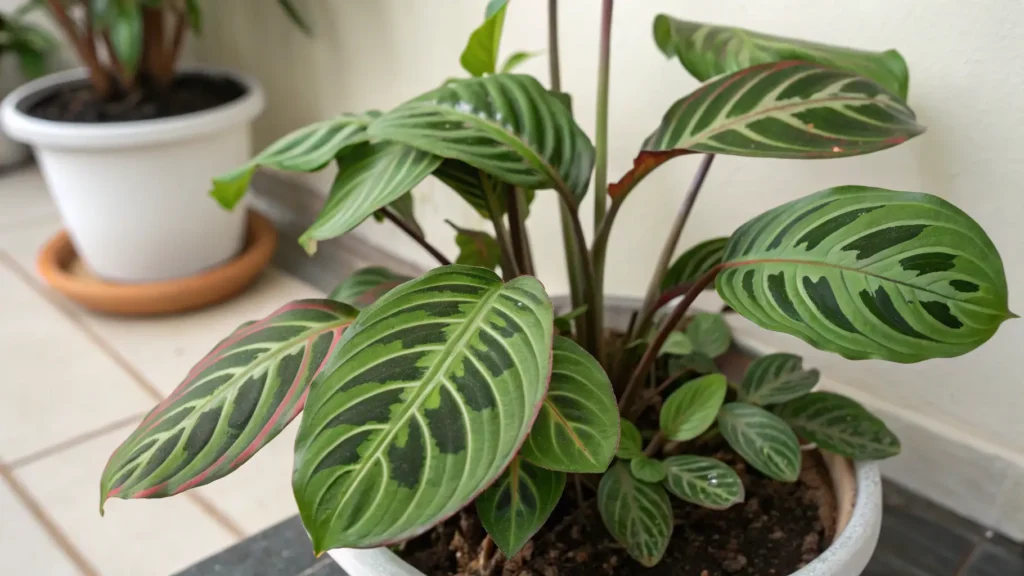
Lack of “Praying” Movement:
- Causes: Often a sign of insufficient light, but can also indicate general stress or health issues.
- Solutions: Move to a brighter spot with indirect light. Assess overall care routine (water, humidity, temperature).
Fading Leaf Color:
- Causes: Too much direct sunlight can bleach the vibrant colors. Nutrient deficiency can also cause a general paleness.
- Solutions: Move the plant to a spot with bright, indirect light. Ensure a consistent fertilization schedule during the growing season.
Battling Pests & Diseases: A Healthy Prayer Plant Defense Guide
Even with the best how to care for your prayer plant routine, pests and diseases can sometimes strike. Early detection and eco-friendly treatment are key to a quick recovery.
Common Pests:
- Spider Mites: Tiny, red or brown mites that create fine webbing on undersides of leaves.
- Signs: Fine webbing, tiny dots on leaves, stippling.
- Treatment: Wipe leaves with a damp cloth, spray with insecticidal soap or neem oil.
- Mealybugs: Small, white, cottony insects found in leaf axils and on stems.
- Signs: White, fluffy masses, sticky residue (honeydew).
- Treatment: Dab with alcohol-soaked cotton swab, use insecticidal soap.
- Aphids: Small, green, black, or brown insects clustered on new growth.
- Signs: Distorted new growth, sticky honeydew.
- Treatment: Blast with strong stream of water, use insecticidal soap.
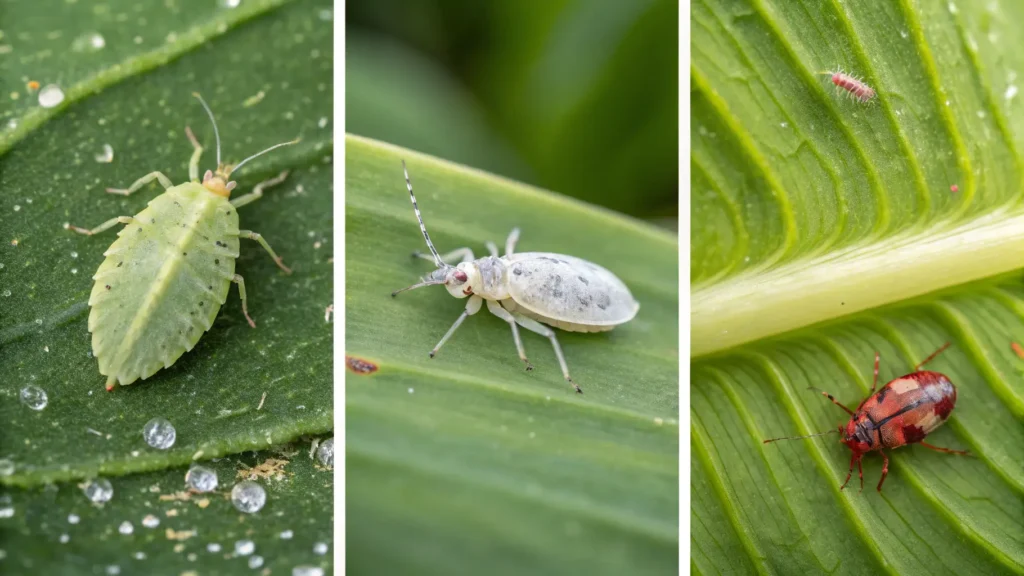
Diseases:
- Fungal Issues (e.g., powdery mildew): Usually caused by poor air circulation and high humidity without proper ventilation.
- Prevention: Ensure good air circulation, avoid misting late in the day.
- Bacterial Leaf Spot: Dark, water-soaked spots on leaves.
- Prevention: Avoid overhead watering, isolate affected plants.
- Root Rot: The most common disease, caused by overwatering.
- Prevention: Ensure excellent drainage, allow soil to dry slightly between waterings.
- Treatment: Repot, trim off rotten roots, use fresh, well-draining soil.
Eco-Friendly & Organic Pest Control:
- Preventative Measures: Regularly inspect plants, quarantine new plants, wipe leaves clean.
- Natural Pesticide Recipes:
- Neem Oil Spray: Mix 1-2 teaspoons of pure neem oil, 1 teaspoon of mild liquid soap, and 1 liter of warm water. Spray entire plant, especially undersides of leaves, every 5-7 days until pests are gone.
- Insecticidal Soap Spray: Mix 1-2 tablespoons of mild liquid dish soap (not detergent) with 1 liter of water. Spray thoroughly, ensuring good coverage.
Advanced & Niche Care for Your Maranta Collection
Beyond the basics of how to care for your prayer plant, these advanced tips will help you fine-tune your approach for specific varieties and even revive plants on the brink.
Seasonal Care Tips:
- Winter Adjustments: Reduce watering frequency as growth slows. Limit or stop fertilizing. Ensure stable temperatures and maintain humidity as indoor air tends to be drier. Provide supplemental light if needed.
- Summer Adjustments: Increase watering frequency as plant actively grows. Fertilize regularly. Can be placed outdoors in a shaded, protected spot if temperatures are consistently above 60°F (15°C) and humidity is high. Bring indoors if nighttime temperatures drop.
Prayer Plant Varieties & Tailored Care:
While general care applies, some nuances can optimize the health of specific Maranta types.
- ‘Red Vein’ (Erythroneura): May appreciate slightly brighter indirect light to enhance its vibrant red veining.
- ‘Lemon Lime’: Can be a bit more sensitive to inconsistent watering, needing a very stable moisture regimen. Its lighter foliage might show browning tips more readily if humidity is low.
- ‘Kim’: Generally robust, but its unique variegation can be dulled by too much direct light.
- ‘Fascinator’: Similar to ‘Red Vein’, needs good indirect light to develop its full array of colors.
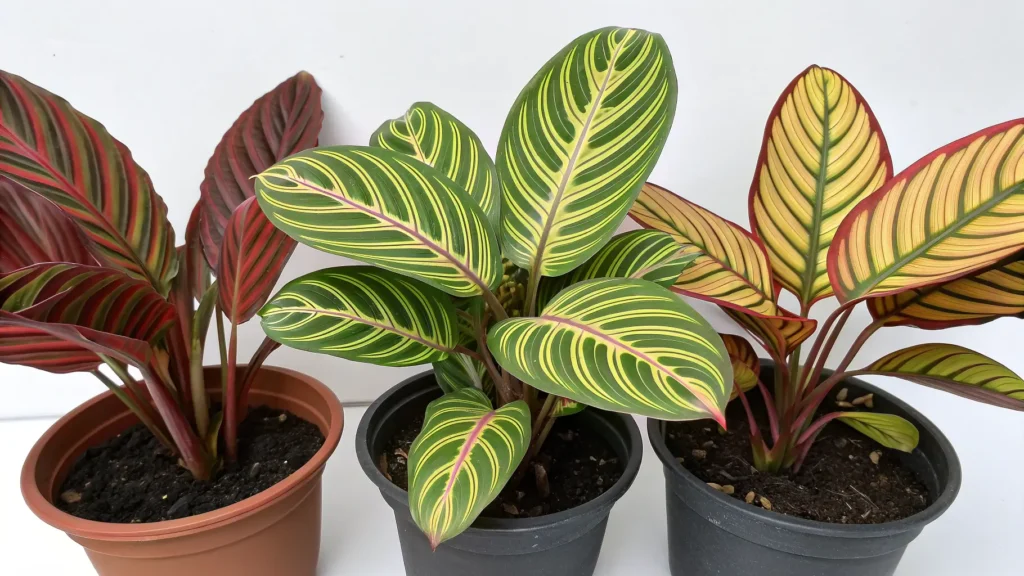
Reviving a Struggling Prayer Plant:
Don’t give up on a struggling Maranta! Many can be brought back with a dedicated recovery plan.
Prayer Plant Recovery Plan Checklist:
- Inspect Roots: Gently remove from pot and check for root rot (mushy, black roots). Trim affected roots with clean scissors.
- Repot: Repot into fresh, well-draining soil in a clean pot (same size or slightly smaller if many roots were removed).
- Optimize Environment:
- Light: Move to bright, indirect light.
- Humidity: Place in a high-humidity environment (e.g., a humidity dome, cloche, or near a humidifier).
- Watering: Water sparingly after repotting, allowing soil to dry slightly.
- Prune: Remove any severely damaged or dead leaves to conserve plant energy.
- Patience: Recovery takes time. Avoid fertilizing until new growth appears.
Boosting Bushiness & Fuller Growth:
- Advanced Pruning Techniques: Regularly pinch back leggy stems to encourage branching. Don’t be afraid to take multiple cuttings to root and plant back into the original pot for a fuller look.
- Optimizing Light & Nutrients: Consistent bright, indirect light and regular fertilization during the growing season will naturally promote dense, lush foliage. Ensure consistent watering and humidity.
Prayer Plant FAQ: Your Top Questions Answered
Here are answers to the most common questions about how to care for your prayer plant:
Q: Is a prayer plant toxic to pets or humans?
A: No, Maranta leuconeura is considered non-toxic to cats, dogs, and humans, making it a safe choice for homes with pets and children.
Q: How long do prayer plants typically live?
A: With proper care, prayer plants can live for many years, often 5-10 years or even longer as cherished houseplants.
Q: Why are they called prayer plants?
A: They are called prayer plants because their leaves fold upwards at night, resembling hands clasped in prayer, and then flatten out again during the day. This movement is called nyctinasty.
Q: Can prayer plants tolerate low light?
A: While they can survive in low light, they won’t thrive. Low light often leads to leggy growth, duller leaf colors, and reduced “praying” movement. Bright, indirect light is always best.
Q: Can prayer plants be grown outdoors?
A: Yes, in USDA zones 11-12, prayer plants can be grown outdoors in shaded, humid areas. In most other climates, they can be moved outdoors to a sheltered, shaded spot during warm summer months, but must be brought indoors before temperatures drop below 60°F (15°C).
Q: How do I make my prayer plant bushy?
A: To make your prayer plant bushy, regularly prune or pinch back leggy stems. This encourages the plant to branch out from lower nodes. Providing optimal light, consistent watering, and adequate humidity also promotes dense growth.
Conclusion: Master the Art of Prayer Plant Care
You now have the definitive guide on how to care for your prayer plant, equipped with expert strategies and interactive tools to cultivate a truly thriving Maranta. From understanding its unique nyctinasty to mastering humidity and battling pests, you’re ready to become a prayer plant pro. The most important takeaways are consistent, filtered watering, high humidity, and bright, indirect light – these are the top 3 secrets to a thriving prayer plant.
Don’t just keep your prayer plant alive; help it flourish and become the vibrant centerpiece it’s meant to be. We encourage you to apply these proven techniques and share your journey with us! Your commitment to understanding its needs will be rewarded with spectacular foliage and captivating daily movements. What are your favorite prayer plant care tips? Share your own prayer plant photos or insights in the comments section below!
